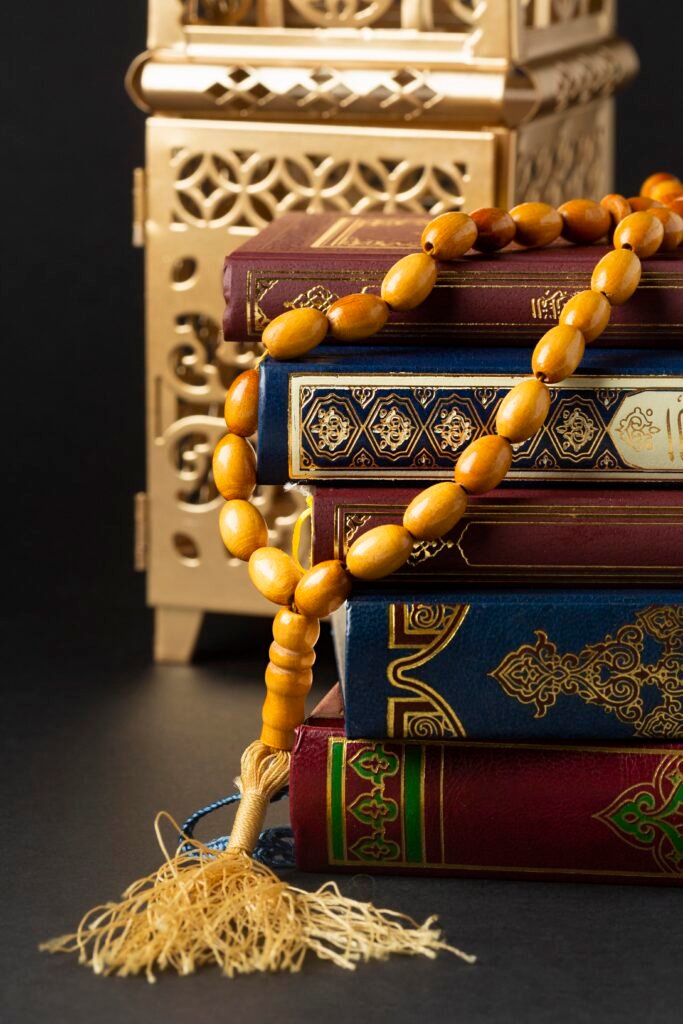Now that we have explored the structure and content of the Quran. let us delve into its revelation and compilation process. This journey takes us from the initial divine revelations to Prophet Muhammad. Through the meticulous preservation methods employed during his lifetime, and finally to the compilation and standardization of the Quranic text as we know it today.
- Process of revelation to Prophet Muhammad
The revelation of the Quran to Prophet Muhammad is a cornerstone of Islamic belief. This process, known as “wahy” in Arabic, began in 610 CE when Muhammad was 40 years old and continued for approximately 23 years until his death in 632 CE.
Modes of Revelation
The Quran was revealed to Prophet Muhammad through various means:
- Direct communication from Angel Gabriel (Jibreel)
- Inspiration during sleep
- Divine inspiration directly into the Prophet’s heart
Timeline of Revelations
The revelations occurred in two main periods:
| Period
| Meccan
| Medinan
|
| Duration
| 13 years
| 10 years
|
| Location
| Mecca
| Medina
|
| Characteristics
| Shorter surahs, focus on monotheism and moral teachings
| Longer surahs, focus on social laws and community organization
|
Gradual Revelation
The Quran was revealed gradually, often in response to specific events or questions from the community. This gradual revelation served several purposes:
- Allowing for easier memorization and understanding
- Providing timely guidance for the developing Muslim community
- Strengthening the faith of believers through continuous divine communication
- Preservation methods during the Prophet’s lifetime
The preservation of the Quran began immediately upon its revelation, employing various methods to ensure its accuracy and authenticity.
Memorization (Hifz)
- Prophet Muhammad would immediately recite the revealed verses to his companions
- Companions would memorize the verses, often reciting them in daily prayers
- The culture of oral tradition in Arabia facilitated this memorization process
Written Records
While the primary mode of preservation was memorization, written records were also maintained:
- Scribes: The Prophet appointed specific companions as scribes to record revelations
- Writing materials: Verses were written on various materials, including:
- Palm leaves
- Parchment
- Flat stones
- Shoulder blades of animals
- Pieces of leather
Regular Recitation and Review
- Prophet Muhammad would recite the entire Quran annually during Ramadan with Angel Gabriel
- This practice ensured the accuracy of memorization and allowed for any necessary corrections
- Compilation into a single book
The compilation of the Quran into a single, unified text occurred after the Prophet’s death, primarily during the caliphate of Abu Bakr (632-634 CE).
Reasons for Compilation
- Many memorizers (huffaz) of the Quran were martyred in the Battle of Yamama
- Fear of losing parts of the Quran with the passing of those who had memorized it
- Need for a standardized reference for the growing Muslim community
Process of Compilation
- Umar ibn Al-Khattab suggested the idea to Caliph Abu Bakr
- Zayd ibn Thabit, a former scribe of the Prophet, was appointed to lead the compilation
- Strict criteria were established for accepting written verses:
- Two reliable witnesses had to testify to the authenticity of each verse
- Written verses had to match the memorized versions
The First Mushaf
- The compiled text was called a “mushaf” (bound leaves)
- This first compilation remained with Abu Bakr during his lifetime
- It was then passed to Umar ibn Al-Khattab during his caliphate
- After Umar’s death, it was kept by his daughter Hafsa
- Standardization of the Quranic text
The final stage in the compilation process was the standardization of the Quranic text, which occurred during the caliphate of Uthman ibn Affan (644-656 CE).
Reasons for Standardization
- Differences in recitation styles among various Muslim communities
- Concerns about potential disagreements over the Quranic text
- Need for a unified version to maintain the integrity of the Quran
The Standardization Process
- Uthman formed a committee led by Zayd ibn Thabit
- The committee compared various written copies and oral recitations
- They produced a standard copy, known as the “Uthmanic Codex”
- Multiple copies of this standardized version were made
Distribution and Preservation
- Copies of the Uthmanic Codex were sent to major Islamic centers
- Existing variants were ordered to be destroyed to prevent confusion
- This standardized version became the basis for all future Quranic texts
Preservation of Different Qira’at (Recitations)
While the text was standardized, the Uthmanic Codex allowed for multiple authentic ways of recitation:
- Seven primary modes of recitation (qira’at) were recognized
- These variations accommodated different Arab dialects and facilitated easier memorization
The process of revelation, compilation, and standardization of the Quran spans several decades, involving meticulous care and attention to detail. This careful preservation has ensured that the Quran we have today is considered by Muslims to be the exact words revealed to Prophet Muhammad over 1400 years ago.
As we move forward, we’ll explore the various interpretations and schools of thought that have emerged from this standardized text, showcasing the rich intellectual tradition surrounding the Quran.

